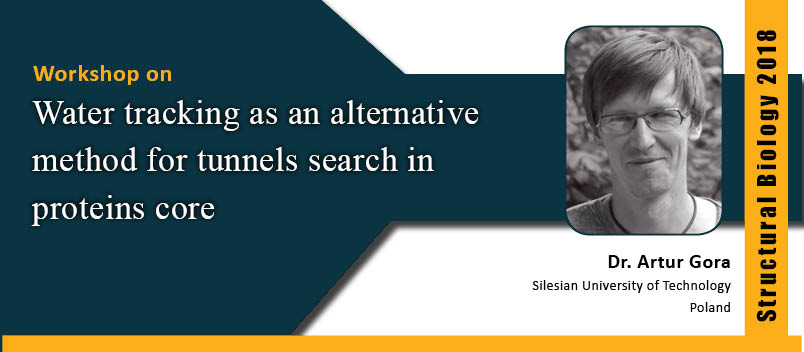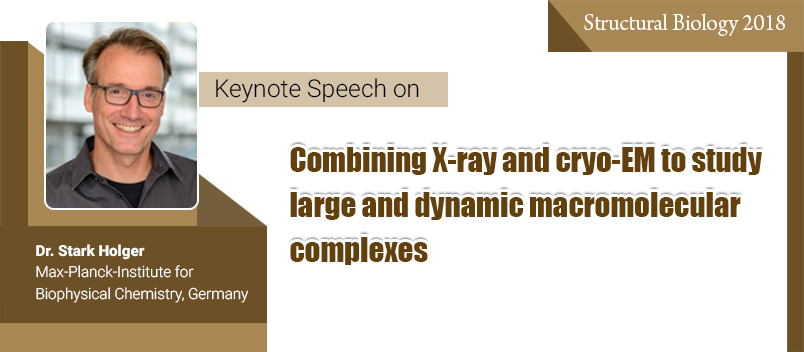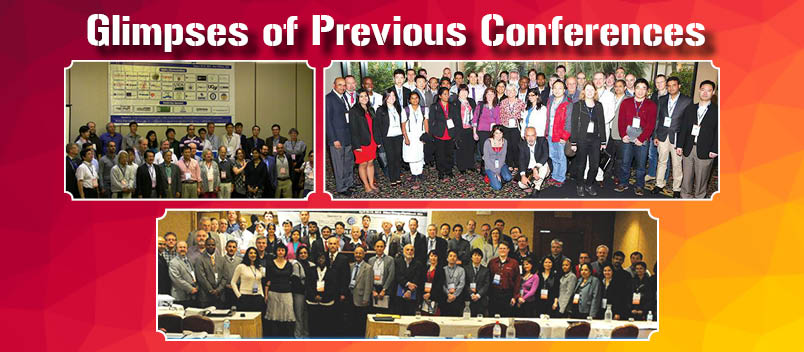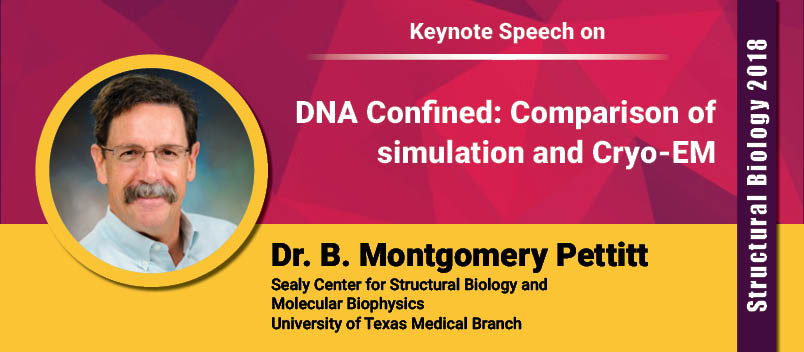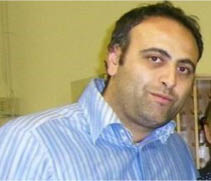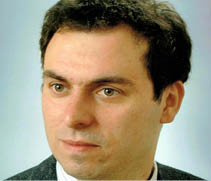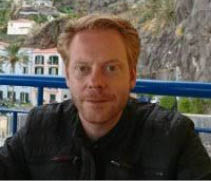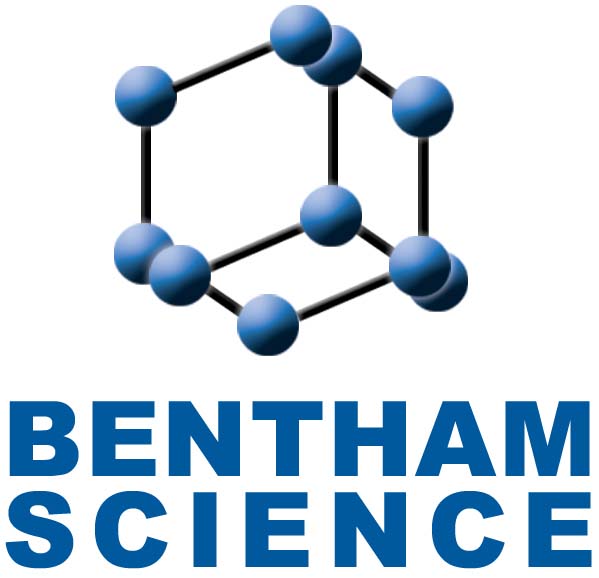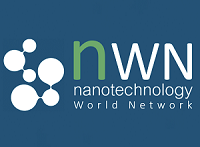Structural Biology 2018
Home page
About Conference:
The EuroSciCon on Structural Biology is going to be held during March 15-16, 2018 at Barcelona, Spain. The Structural biology conference focuses on the topics Analytical Techniques, Computational Chemistry, Computational Methods and Biology, Molecular Modelling, Simulation & Molecular Graphics, Molecular Engineering, Molecular Design Software, 3D Protein Structure Predictions, Structural Bio-informatics, Drug Designing, Biomarkers & Proteomics, Databases, Chemical Biology, Biophysics, Genome Informatics and Cancer Immunotherapy.
By bringing together interdisciplinary researchers working in a variety of applicational areas, this Euro Structural Biology would lay a platform for all the Academicians, Scientists, Young Researchers, Industrial Members to interact and intend their advanced scientific researches with global eminent scientists and accelerate progress in this area.
Theme: Clustered Science Technologies for emerging & advancements in Structural Biology
This conference would be a great opportunity for the global scientists with great mark of vision in the field of Scientific advancing Technologies.
Importance & Scope:
Structural Biology a diversified interrelated science used to predict three-dimensional structures of proteins of unknown structure and to design new proteins using new computational techniques
The work continues to increase our understanding of the diverse roles molecules play in biology and to spur advances in medicine. The structural Biology is also used in the Pharmaceutical Industries to increase our understanding of biological processes and lay the foundation for advances in drug designing, disease diagnosis, treatment and prevention. This gives an expansion of the pharmaceutical industries boosting the growth for Animal & Human Health Care.
Sessions/Tracks
Biomolecules are too small to view even by the advanced microscopes. Structure probing biochemical techniques determine these biomolecular structures in vast numbers of the same identical molecules at once. Scientists use them to study the "native states" of biomolecules. Few of the best methods determining the structures include X-ray crystallography, Cryo-Electron Microscopy and Nuclear Magnetic Resonance.
1. Mass spectrometry
2. Macromolecular crystallography Proteolysis
3. Nuclear magnetic resonance spectroscopy of proteins (NMR)
4. Electron paramagnetic resonance (EPR)
5. Cryo-electron microscopy (cryo-EM)
6. Multiangle light scattering
7. Small angle scattering
8. Ultrafast laser spectroscopy
9. Dual-polarization interferometry and circular dichroism
Computational chemistry simulates chemical structures and reactions numerically, based on the fundamental laws of physics. Chemists apply this existing computer programs and methodologies to specifically solve chemical questions. Major areas may be distinguished within computational chemistry.
1. Electronic structure determinations
2. Geometry optimizations
3. Frequency calculations
4. Transition structures
5. Protein calculations
6. Electron and charge distributions
7. Potential energy surfaces
8. Rate constants for chemical reactions
9.Thermodynamic calculations- heat of reactions, energy of activation.
Computer programs predict atomic, molecular properties and reaction paths for chemical reactions of biomolecules. Structural genomics emphasizes high throughput of every protein encoded by the genome determining protein structures. These methods help in scrutinizing the protein structures which are cost effective and time conservative.
1. Molecular mechanics
2. Electronic structure theory
3. De novo methods
4. Ab initio modeling
5. Sequence-based modeling
6. Threading
7. Structural Plant Biology
Molecular modelling exhibits all the hypothetical methods and computational procedures used to mimic the behavior of macromolecules. In conventional monoscale modeling and simulation approaches, the scope and validity of a biological model is restricted to a specific time and space scale.
Molecular simulation requires the use of the efficient computers in stimulating the interactions among the atoms to study the material properties, these simulations based on the methods help in the quantum mechanical results ranging from atoms to clusters of molecules based on the time from milliseconds or longer. Molecular Graphics helps in characterizing the global and local properties of molecules, processes and chemical reactions.
The techniques are applied in various emerging fields like drug designing in labs, computational chemistry, materials science and computational biology for studying macromolecular systems ranging from small to large biological systems. The techniques are performed using the computers for modelling, research studies, properties of atoms and molecular interactions.
1. Drug design
2. Materials Science
3. Protein folding
4. Enzyme catalysis
5. Protein stability
6. Conformational changes associated with biomolecular function
7. Molecular recognition of proteins, DNA and membrane complexes
Molecular Engineering is integrated by nature, encompassing aspects of clustered science technologies. Being a dynamic and evolving field based on molecular principles molecular engineering uses high performance computing in huge vastly using computers in simulation, great tools and instruments to make and analyze the interactions of molecules and the surfaces of materials at the molecular and Nano-scale.
1. Computational and Theoretical Approaches
2. Microscopy
3. Molecular Catalysis
4. Surface Science
5. Synthetic Biology
6. Nanotechnology
The limitations of technology have led to serendipitous methods for rendering the naive molecules and atoms in depiction with good visibility. The aspects related to constructing molecular models has always pushed the limits of display technology, and has seen several cycles of integration and separation of compute-host and display.
1. Molecular graphics
2. Interactive molecular drawing and conformational editing
3. Building polymeric molecules, crystals, and solvated systems
4. Geometry optimization
5. Molecular Dynamics
The approach generally summarizes the usage of software tools for protein structure predictions, as a key for understanding and manipulating of its biochemical and cellular functions. This major aspect is based on computational aspects used in Bioinformatics and chemistry. Computational prediction methods, as ab initio fragment assembly, advanced fold recognition, composite approaches, and molecular docking are applied to extend the study of protein structures.
1. Homology modeling
2. Secondary structure prediction
3. Transmembrane helix and signal peptide prediction
Analysis and prediction of 3D-structures of macromolecules such as proteins, RNA, and DNA by computational methods has brought biological insights and global prospective. Structural bioinformatics tools have been developed, evaluated, applied to answer specific questions concerning a broad range of topics. Structural bioinformatics databases offer enormous possibilities for gathering analysis of available information about biomacromolecules and in broadening the possibility of analysis.
1. Protein Data Banks & Structural Classification
2. Molecular Modelling
3. Protein Structure Predictions
Drug designing involves the use of 3D information about biomolecules obtained from analytical techniques which is more traceable when there is a high-resolution structure of a target protein bound to a potent ligand. Molecular mechanics or molecular dynamics is most often used to estimate the strength of the intermolecular interactions between the molecule and its biological target. Computational methods have geared up in the discovery of huge number of iterations providing the novel structures.
Biomarkers includes tools and technologies that aids in dynamic and powerful approach to understand the spectrum of neurological diseases in knowing the prediction, cause, diagnosis, progression, regression, or outcome of treatment of a disease.
1. Ligand-based drug design
2. Structure-based drug design
3. Biomarkers
Bioinformatics being a computer-based discipline in science, emphasizes on the databases and software developmental tools. The biological phenomena are studied based on the biomolecules their interactions extending to the complete metabolism of the organism and in understanding the evolution of life. This facilitates in elucidating the intrinsic cellular studies, genetic factors, genetic diseases, medications and correlation with the other evolutionary species. The databases realm within them the data source of every biomolecule thus making it easily accessed, managed and updated to the researchers.
1. Sequence databases
2. Structures databases
3. Functional databases
4. Species-specific data
Experimental and computational approaches are required to integrate and interpret the data properly to gain molecular understanding of fundamental biological mechanisms and to design small-molecule probes that can perturb biological pathways in informative and potentially therapeutic ways.
Developing and applying experimental and computational approaches to elucidate molecular structure, design novel molecules, and study complex biological processes.
1. Chemical probes
2. Single molecule techniques
3. Structure-based drug discovery and design
4. Structure and mechanism of macromolecular complexes
Advancements in the scientific technologies paved the way in anticipating 3D structures and in quantifying dynamics of basic cellular components to atomic level. The cellular and molecular biology extremely use cutting-edge tools of biophysics like protein- and RNA-based assemblies, enzymes, receptors, ion channels, transport proteins, protein-ligand complexes, quantitative analyses of chaperones.
1. Cellular Biophysics
2. Molecular Biophysics
Genome Informatics plays a major role in computational biology in the development of tools for DNA sequence information and analysis, gene mapping, genetic variation, complex trait mapping, predict protein sequence and structure. Next Generation sequencing results in large amounts of long or short DNA reads requiring assembly process to generate the complete genome sequence. De novo genome assembler programs have been written to detect overlaps between reads, to assemble overlaps into contigs, and then combine contigs into scaffolds obtaining a draft genome sequence.
There is scope in the development and maintenance of databases of genomic and genetic data which include new tools for annotating complex genomes to expand their utility.
- Sequencing
- Assembly
- Annotation
Treatments that help in stimulating the immune system in fighting cancer-serves the new approaches in cancer therapeutics. New research is constantly looking for novel and more refined ways for managing cancer or treating by effective drugs. Major strategies aim at exploiting the therapeutic potential of tumor-specific antibodies and cellular immune effector mechanisms.
The combinational studies of structural biology and Molecular modelling focuses on the drug designing.
Cancer research studies has laid a good strategy in studying the biomolecules leading advancements I cancer immune therapies.
- Monoclonal antibodies
- Cancer Vaccines
- Non-Specific Immunotherapies
- Antibiotic resistance
- Oncogenic drug targets
- Molecular chaperones as cancer drug targets
- Drug discovery
15. Structural Virology:
Viruses show different morphologies in their shapes and sizes. These are smaller in structures than the bacteria. Though these are simpler as an individual, when formed in group they are exceptionally diverse both in replication strategies and structures. Many viruses are important human pathogens.
Many techniques such as x-ray crystallography, NMR and cryo-EM are used to determine viral structures. These structure in-turn are used to develop anti-viral drugs and vaccines.
- X-ray crystallography
- Solution NMR spectroscopy
- Cryo-electron tomography
Market Analysis
Market of Structural Biology:
The drug discovery sector is anticipated to grow at a lucrative CAGR owing to continual introduction of software modifications with focus on enhanced drug designing aimed to accelerate the process in identifying novel therapeutic agents.
According to the study by Grand View Research, Inc., the structural biology & molecular modeling techniques market has accounted for USD 2.52 billion in 2015. This is expected to grow at a CAGR of 18.2% in the coming years.
The market is especially driven by an increase in the predominantly by chronic diseases with acquired drug resistance that elucidates the requirement of new and advanced therapeutics for mankind. This pave the way in huge clinical urgency to embody structural biology & molecular modeling techniques for the developments in new and advanced generation of drugs.
The increasing demand for molecular modeling techniques is essentially attributable to the significance in cost reduction enabling. This is as the prediction software identifies possible adverse reactions and showcases the drug efficacy and toxicity in the pre-clinical stages, thereby decreasing the chances of drug failure in the later stages. Thus, the factors aid as the important reasons responsible for the widened market demand.
Global structural biology & molecular modeling techniques market share:
Structural biology & molecular modeling techniques market, by tools, 2014 – 2025:
Learn More
Global Top Structural Biology Universities
USA Structural Biology Universities
Harvard University | Massachusetts Institute of Technology | EuroSciCon | Stanford University | University of California Berkeley | California Institute of Technology | Johns Hopkins University | University of California San Francisco | Yale University | Princeton University | Scripps Research Institute | Cornell University | EurosCicon Conferences | Duke University | Washington University in St. Louis | Columbia University | Rockefeller University | University of California San Diego | University of Chicago | University of Wisconsin Madison | University of Michigan | University of Pennsylvania | University of Washington | EuroSciCon | Northwestern University | Vanderbilt University | Emory University | University of Texas | Brown University | Indiana University | University of Arizona | Ohio State University | University of Alabama | University of Pittsburgh | Michigan State University | University of Virginia | Arizona State University | Brandeis University | Georgia Institute of Technology | EuroSciCon | University of Florida | Purdue University | University of Maryland | New York University | University of Utah | University of Kansas | University of Rochester | Colorado State University | Boston University | Florida State University | Wesleyan University | Miami University | Albany Medical College | EuroSciCon | EurosCicon Conferences |
European Structural Biology Universities
University of Oxford | University of Cambridge | University of Copenhagen | University College London | Imperial College London | Swiss Federal Institute of Technology Zurich | EuroSciCon | University of Zurich | Karolinska Institute | University of Munich | University of Edinburgh | Pierre and Marie Curie University | Heidelberg University | University of Manchester | Catholic University of Leuven | University of Helsinki | Freie Universität Berlin| Utrecht University | Uppsala University | Wageningen University and Research Center | Humboldt-Universität zu Berlin | University of Groningen | University of Barcelona | EuroSciCon |Technical University of Munich | Leiden University | University of Basel | University of Strasbourg | EurosCicon Conferences | Ghent University | King's College London | University of Geneva | University of Dundee | Lund University | Johann Wolfgang Goethe University Frankfurt am Main | University of Göttingen | University of Freiburg | Stockholm University | University of Gothenburg | University of Sheffield | Eberhard Karls University, Tübingen | University of Padua | University of Würzburg | Université Paris-Sud | University of Vienna | University of Bristol | EuroSciCon | Free University of Brussels | University of Milan | University of Amsterdam | University of Nottingham | University of Hamburg | University of Oslo | University of Leeds | University of Birmingham | University of Southampton | University of Bern | University of Cologne | Medical University of Vienna | University of Münster | University of Lisbon | University College Dublin | University of Aberdeen | University of Liverpool | Trinity College Dublin | Delft University of Technology | Bielefeld University | University of Leipzig | Cardiff University | University of York | University of Regensburg | University of Warsaw | EuroSciCon | EurosCicon Conferences |
University of Tokyo | National University of Singapore | Kyoto University | Peking University | Tsinghua University | Weizmann Institute of Science | Osaka University | Seoul National University | Shanghai Jiao Tong University | Fudan University | Zhejiang University | Tel Aviv University | Hebrew University of Jerusalem | University of Hong Kong | EurosCicon Conferences | EuroSciCon |Tohoku University | Nanyang Technological University | Korea Advanced Institute of Science and Technology | EurosCicon Conferences | Hokkaido University | National Taiwan University | Keio University | Shandong University | Nagoya University | Sungkyunkwan University | Yonsei University | Kyushu University | Sun Yat-sen University | Huazhong University of Science and Technology | Wuhan University | University of Science and Technology of China | Tokyo Institute of Technology | Tokyo Institute of Technology | EuroSciCon | King Abdulaziz University | National Cheng Kung University | Kobe University | Korea University | Pohang University of Science and Technology | Indian Institute of Science | Nankai University | Tongji University | King Saud University | EuroSciCon | Nanjing University | Harbin Institute of Technology | University of Tsukuba | Kyung Hee University | Sichuan University| Xiamen University | Chonnam National University | Jilin University | Central South University | University of Tehran | Aligarh Muslim University | Chinese University Hong Kong | University of Delhi | South China University of Technology | Waseda University | Okayama University | Southeast University | Soochow University | Mahidol University | Hiroshima University | Tianjin Medical University | Kanazawa University | Tehran University of Medical Sciences | Kumamoto University | Kyungpook National University | National Yang-Ming University | China Medical University Taiwan | EuroSciCon | EurosCicon Conferences |
Australia & NewZealand Structural Biology Universities
University of Queensland Australia | University of Melbourne | University of Sydney | Monash University | University of New South Wales | University of Western Australia | University of Auckland | University of Otago | EuroSciCon | University of Adelaide | Australian National University | University of Queensland Australia | EuroSciCon | EurosCicon Conferences |
Structural Biology Societies
American Society for Cell Biology | American Society for Biochemistry and Molecular Biology | Association of South-Eastern Biologists | Federation of European Biochemical Societies | Royal Society of Biology | Society for Experimental Biology | International Society for Computational Biology | Society for Molecular Biology and Evolution | American Crystallographic Association | Belgian Society of Biochemistry and Molecular Biology | International Mass Spectrometry Foundation | International Union of Crystallography | European Society of Human Genetics | European Proteomics Association | European Molecular Biology Organization | African Society for Bioinformatics and Computational Biology | American Mass Spectrometry Society | Australian and New Zealand Mass Spectrometry Society | Australasian Proteomics Society | Austrian Proteomics Society | Australia and New Zealand Society for Cell and Developmental Biology | Czech Society for Structural Biology | Biophysical Society | American Chemical Society | New England Structural Biology Association | The Protein Society | American Crystallographic Association | International Union of Crystallography | British Crystallographic Association | European Crystallographic Association | Hellenic Crystallographic Association | Bioinformatics society of India | International Society for Computational Biology | EurosCicon Conferences | South African Crystallographic Society | Australian Society for Biochemistry and Molecular Biology | Australian Society for Biophysics | American Society for Mass Spectrometry | British Biophysical Society | Bioinformatics Italian Society | Mid-South Computational Biology and Bioinformatics Society | EuroSciCon | EurosCicon Conferences |
Related Conferences to Structural Biology
3rd International Enzymology Conferences, March 05-06, 2018 London, UK | 12th International Metabolomics Conferences, May 14-15, 2018, Baltimore, USA | 13th Systems Biology Conferences, June 11-12, 2018 London, UK | 4th Glycobiology Congress, September 17-19, 2018, Rome, Italy | Biochemical Basis of Respiratory Disease, January 08-10, 2018, England | Shaping your career in Molecular Biosciences: Taking a wider view, January 15, 2018, London, UK | The Dynamic Cell III March 19-21, 2018, Manchester; New Horizons in ESCRT Biology, April 17-20, 2018, London | 30th Annual RNA Polymerase focused Meeting April 19-20, 2018, London, UK | Experimental techniques for studying proteins and lipids in Biological Membranes, May 15-16, 2018, UK | Structure and Mechanism of Membrane Proteins May17-18, 2018, UK | Small G Proteins in Cellular Signalling and Disease, July 09-12, 2018, Cambridge, UK |
Major Structural Biology Related Research Units
Structural Biology Group, RIKEN | OKINAWA Institute of Science and Technology | Markey Center for Structural Biology | New York Structural Biology Center | Department of Anatomy and Structural Biology, Einstein College | Department of Structural and Cellular Biology - Tulane University | Structural Biology, Penn State University | Chemical and Structural Biology – The Rockfeller University | Center for Structural Biology - University of Illinois at Chicago | Structural Biology Facility - Robert H. Lurie Comprehensive Cancer Center of Northwestern University | Department of Cellular and Structural Biology – UT Health Science Center | UCSF Macromolecular Structure Group | Structural Biology NMR Facility - University of Minnesota | EurosCicon Conferences |
Structural Biology Job Opportunities
Membrane Protein Structural Biologist ,Institute For Biomedical Informatics | Scientist, X-Ray Crystallography , Johnson & Johnson Family of Companies | Research Associate – Experimental Structural Molecular Biology, SLAC National Accelerator Laboratory | Postdoctoral Fellow, University of Delaware | Research Associate Scientist, Protein Science, Johnson & Johnson Family of Companies | Structural Biology Research Technician, Clinical Research Management | Staff Scientist - Structural Biology ,St. Jude Children's Research Hospital | Research Technician - Molecular Biology and Microbiology, TUFTS University | Postdoctoral Fellow- Structural and Molecular Sciences , Pfizer | Structural Biology Laboratory Assistant Professor , UT Southwestern Medical Center | Manager, AAV Structural Biologist, Rare Disease , Pfizer Inc.| Co-Op, Structural Biology & Biophysics , Vertex Pharmaceuticals | Basic Life Research Scientist , Stanford University | Process Development Scientist, Sequencing, Roche | Postdoctoral Associate , Rutgers University | Physical Organic Chemist , Los Alamos National Laboratory | Laboratory Specialist, Biology , Pima Community College | Sr Consultant - Structural Biology , Thermo Fisher Scientific | Research Technologist II - Protein Biophysics / Molecular Biology, Medical College of Wisconsin | Research Associate , Institute For Biomedical Informatics - United States | Postdoctoral Associate, Howard Hughes Medical Institute | Associate Scientist II / Scientist I - Biophysics , AbbVie , South San Francisco, CA | Postdoctoral Research Associate, National Jewish Health | Postdoctoral fellow in Biochemistry and Structural Biology, SciLifeLab | Hanna H. Gray Fellow, Howard Hughes Medical Institute | Faculty Position in Biophysics, University of Texas Southwestern Medical Center | Assistant Professor Tenure Track, Washington State University, Institute of Biological Chemistry | Assistant, Associate or Professor in Cryo-EM, University of Utah Biology Department | Assistant/Associate Professor – Structural Biology/Protein NMR, Medical University of South Carolina | EurosCicon Conferences |
Structural Biology Journals
Journal of Structural Biology | Current Opinion in Structural Biology | Computational and Structural Biotechnology Journal | Progress in Biophysics & Molecular Biology | Intrinsically Disordered Proteins | Structure, Function and Therapeutics | BMC Biophysics | Proteome Science | International Journal of Peptide Research and Therapeutics | Journal of Biomolecular NMR | Proteome Science | Biochemical Genetics | Molecular and Cellular Biochemistry | EURASIP Journal on Bioinformatics and Systems Biology | Journal of Applied Genetics | Functional & Integrative Genomics | Epigenetics & Chromatin | Data Mining in Structural Biology | Structural Biology and Functional Genomics | Synchrotron Radiation in Structural Biology | Structural Interfaces and Attachments in Biology | Topics in Molecular and Structural Biology | Structural Integrity | Structural Chemistry | Structural Proteomics | Structural Nanocomposites | Structural Genomics | Structural Dynamics | Immuno Physics and Immuno Engineering | EurosCicon Conferences |

